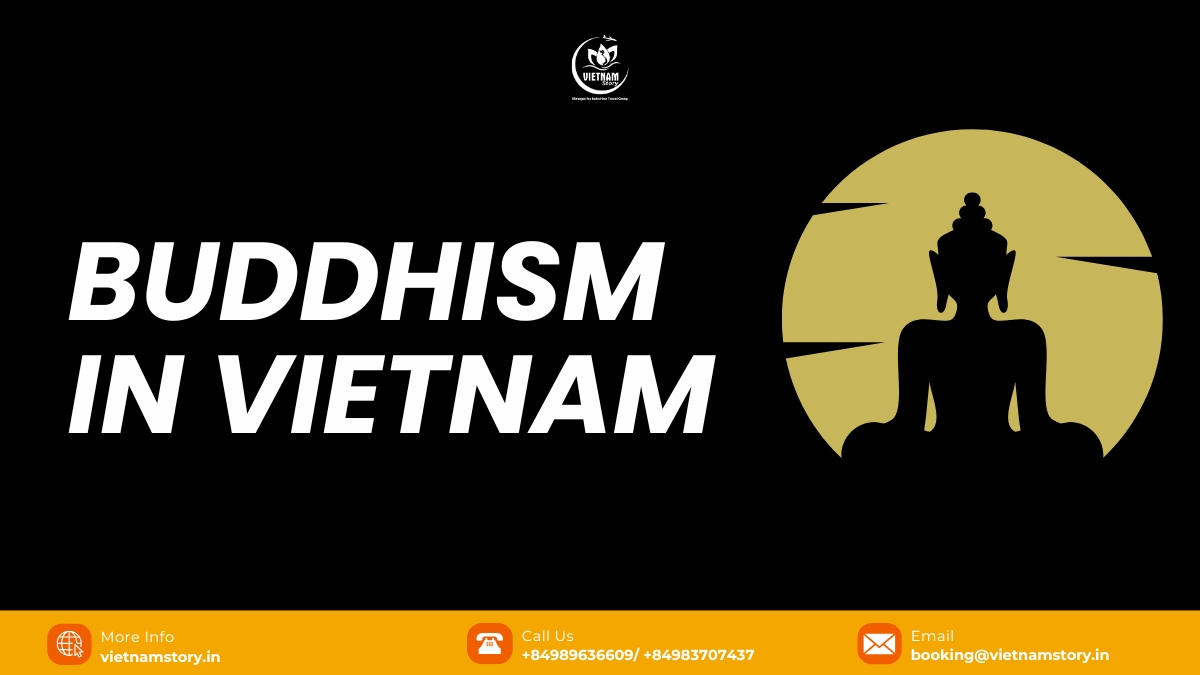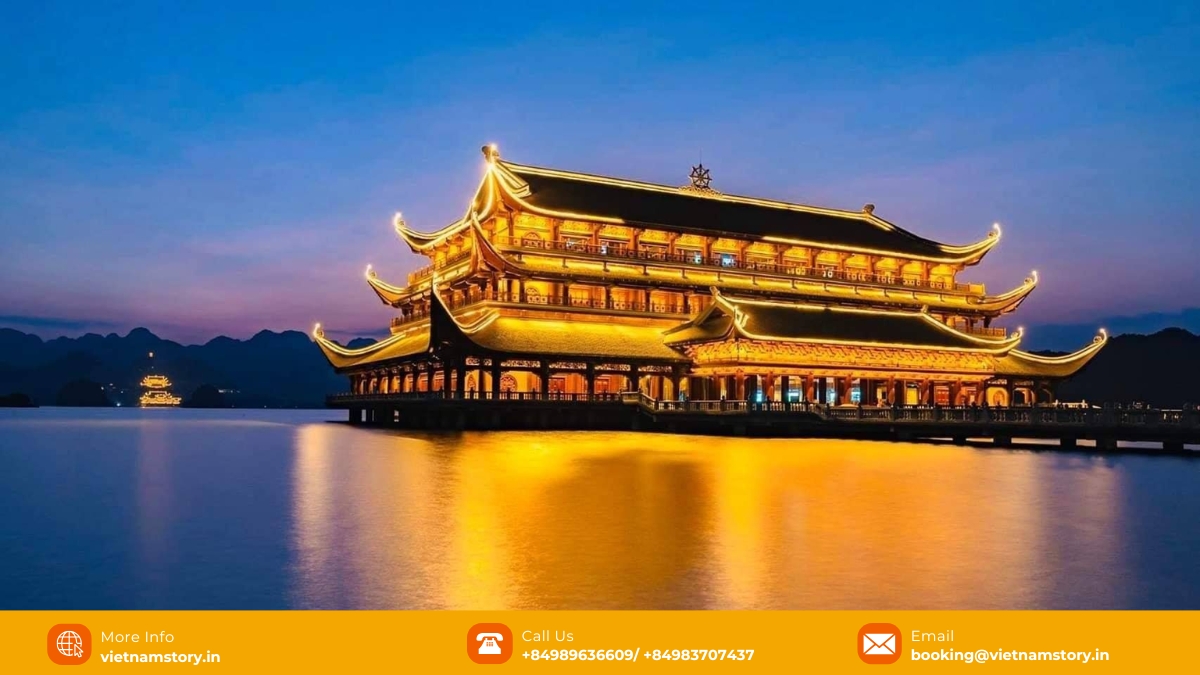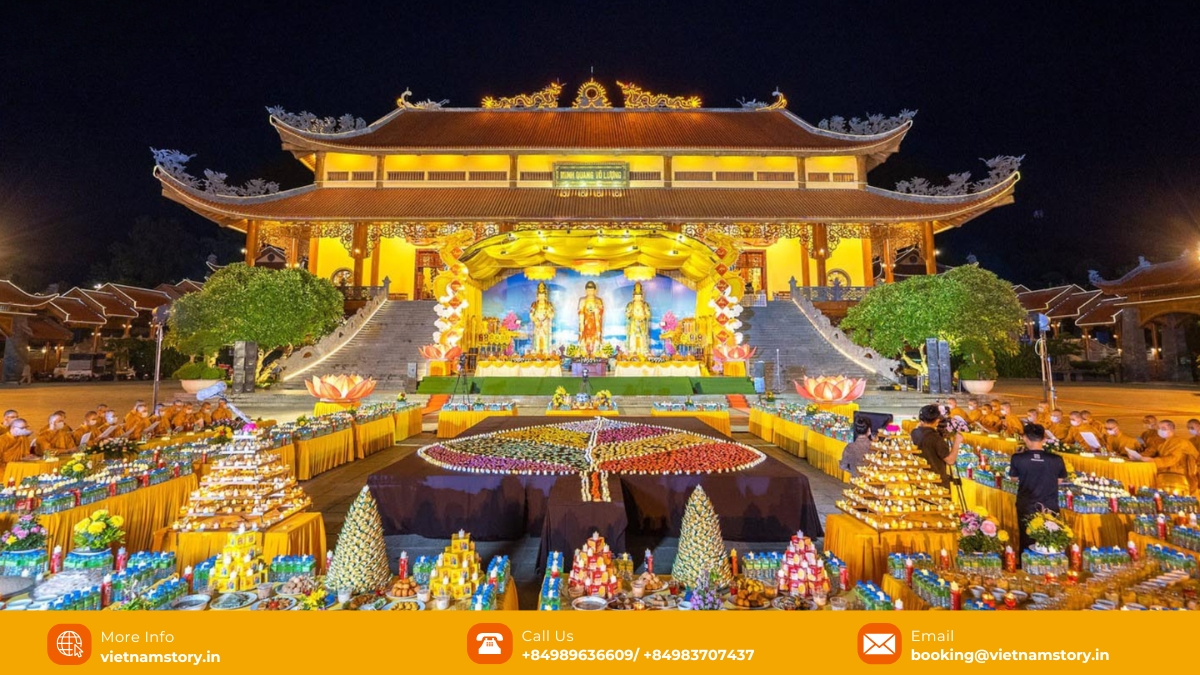Vietnam, a land of captivating contrasts and vibrant culture, boasts a rich and multifaceted religious landscape. Among the prominent faiths shaping Vietnamese society and spirituality, Buddhism in Vietnam stands as a significant force, deeply interwoven into the fabric of the nation’s history, daily life, and cultural identity. More than simply a religion, Buddhism in Vietnam is a living tradition, primarily a dynamic interplay of Mahayana traditions – notably a blend of Zen (Chan) and Pure Land schools – alongside a resilient Theravada presence. Its development reflects ancient teachings, regional variations, the influence of local beliefs like ancestor veneration (resulting in unique syncretism), and a history marked by profound resilience. This article delves into the fascinating history, key tenets, significant figures like Thich Nhat Hanh, and sacred pagodas and temples impacting Buddhism in Vietnam, offering essential insights for travelers, particularly those from India seeking to understand the spiritual heritage connecting back to Buddhism’s roots.

A Journey Through Time: The Historical Development and Resilience of Buddhism in Vietnam
The arrival of Buddhism in Vietnam is thought to trace back to at least the 2nd century CE, arriving via maritime routes from India (the birthplace of Buddhism) and overland routes from China. This dual origin influenced its early development, particularly under Chinese domination which shaped the prevalence of Mahayana Buddhism. The gradual assimilation of Buddhist teachings into the local culture, marked by adaptation and integration, shaped the unique character of Vietnamese Buddhism.
The flourishing of Buddhism under the Ly and Trần dynasties (11th-14th centuries) represents a significant “golden age”. This era witnessed royal patronage, the construction of magnificent temples and pagodas, and the establishment of Buddhist monasteries as vital centers of learning and art, fostering the growth of Mahayana thought.
Subsequent periods saw fluctuating fortunes. The Le Dynasty (15th-18th centuries) saw less emphasis on Buddhism. The French colonial era (part of French Indochina) introduced Catholicism and complex dynamics. Policies under figures like the Catholic President Ngo Dinh Diem in South Vietnam led to tensions and significant persecution. The Buddhist Crisis of 1963 became a pivotal moment, marked by widespread protests against discriminatory policies and the shocking self-immolation of the monk Thich Quang Duc in Saigon (now Ho Chi Minh City), an act of defiance that resonated globally.
The post-colonial era, including the Vietnam War and reunification under the Communist Party, brought new challenges. The globally renowned Zen master Thich Nhat Hanh was exiled during this period for his peace advocacy. The government established the official Buddhist Church of Vietnam (BCV), while the independent Unified Buddhist Church of Vietnam (UBCV) faced suppression, leading to ongoing human rights concerns regarding religious freedom. Despite these periods of difficulty, Buddhism in Vietnam has shown remarkable resilience, continuing to shape the ethical values, social interactions, and spiritual aspirations of many Vietnamese people today.
The Diverse Streams: Mahayana, Theravada, and Unique Vietnamese Buddhist Traditions
Vietnamese Buddhism isn’t monolithic; it encompasses a fascinating spectrum of schools and practices:
- Mahayana Buddhism: The dominant form, primarily a unique blend of Zen (Chan) and Pure Land Buddhism. Zen practice, emphasizing meditation and mindfulness for direct enlightenment, is often pursued more intensively by monks and nuns (the Sangha). The Venerable Thich Thanh Tu is a renowned contemporary Zen teacher, notably associated with Truc Lam Zen Monastery in Da Lat. Mahayana emphasizes the Bodhisattva path – aspiring to enlightenment for the benefit of all sentient beings.
- Pure Land Buddhism: Extremely popular among laypeople, this practice focuses on devotion to Amitabha Buddha and chanting his name, seeking rebirth in his Pure Land (Sukhavati) as a means to liberation.
- Theravada Buddhism: While a minority, Theravada Buddhism (“Tradition of the Elders”) maintains a significant presence, mainly among the ethnic Khmer Krom people in the Mekong Delta (Southern Vietnam), but also among some Vietnamese. It emphasizes the personal quest for enlightenment and adheres closely to the original teachings and monastic discipline (Vinaya). Interestingly, Theravada monks study alongside Mahayana monks at institutions like Saigon’s Van Hanh Buddhist University.
- Unique Vietnamese Forms & Syncretism: Vietnam has also seen the evolution of unique Buddhist expressions. The Venerable Minh Dang Quang founded an indigenous order successfully combining Mahayana philosophy with strict Theravada-style Vinaya rules and daily alms rounds by the Sangha. Furthermore, the colonial period saw the rise of hybrid, syncretic sects like Hoa Hao (a lay-based, sometimes militant form of “Buddhist Protestantism”) and Cao Dai, which attempts to unify elements of Buddhism, Taoism, Confucianism, Christianity, and spiritualism, organized similarly to the Catholic Church. The deep-rooted Vietnamese tradition of ancestor veneration is also seamlessly integrated into Buddhist practices by many families.
Living the Dharma: Core Beliefs and Practices of Buddhism in Vietnam

Buddhist practices (following the Dharma) in Vietnam are diverse and deeply ingrained in daily life:
- Meditation: Central to Zen, various forms of meditation are widely practiced to cultivate inner peace, concentration, and spiritual awareness.
- Chanting: Reciting sutras and mantras, particularly the name of Amitabha Buddha in Pure Land practice, is common in temples and homes for spiritual growth.
- Temple Worship: Visiting pagodas and temples is vital. Devotees make offerings (incense, flowers, fruit) and often visit on the 15th day of the lunar month (Ram) and during festivals. Committed laypeople may formally “take refuge,” receiving a Buddhist name and wearing a traditional grey costume during temple visits.
- Festivals: Major Buddhist festivals include Vesak (celebrating Buddha’s Birth, Enlightenment, and Passing) and Vulan (Ullambana or the Ghost Festival), focusing on honoring ancestors and the deceased, reflecting filial piety.
- Ethics and Lifestyle: The principles of Karma (action and consequence) and rebirth (samsara) guide ethical conduct. Many Buddhists practice vegetarianism reflecting compassion (Karuna) and non-violence (Ahimsa). The ultimate goal is Nirvana (enlightenment), achieved through the Eightfold Path (the Middle Path between extremes).
- Sangha and Community: Monks are addressed as “Thay” (Teacher), nuns as “Su Co” (Sister). All ordained members adopt the surname “Thich” signifying joining the Buddha’s family. There is notable equality between monks and nuns. Buddhists commonly greet each other by placing palms together and saying “Mo Phat” (Praise Buddha) or reciting Amitabha’s name. There’s also a large, organized lay youth movement called “Gia Dinh Phat Tu” (Family of Buddha’s Children).
Icons of Faith: Revered Figures and Sacred Pagodas of Vietnamese Buddhism
Numerous figures have shaped Vietnamese Buddhism, including monks like Thich Nhat Hanh (global peace advocate), Thich Quang Duc (symbol of protest), Thich Thanh Tu (renowned Zen teacher), and Minh Dang Quang (founder of a unique order). Outside many pagodas, you’ll often find statues of Guan Yin (Quan The Am), the Bodhisattva of Compassion, sometimes depicted with multiple arms to see and help all beings.
Vietnam is adorned with countless beautiful temples and pagodas, each with unique history and architecture. Visiting these sites offers profound insights into Buddhism in Vietnam. Here are some notable examples:
Top Famous Buddhist Temples & Pagodas in North Vietnam
- One Pillar Pagoda (Hanoi): An iconic, historically significant wooden pagoda built on a single stone pillar.
- Bai Dinh Pagoda (Ninh Binh): A vast modern complex, one of Southeast Asia’s largest, showcasing grandeur.
- Quan Su Pagoda (Hanoi): An important historical temple, headquarters of the BCV, known for its peaceful atmosphere.
- Yen Tu Pagoda (Quang Ninh): A major pilgrimage site on Yen Tu Mountain, significant for the Truc Lam Zen school.
- Tam Chuc Pagoda (Ha Nam): Another expansive modern complex set amidst stunning natural scenery.
- Phat Tich Temple (Bac Ninh): An ancient site preserving important artifacts and notable architecture.
Top Impressive Buddhist Temples & Pagodas in Central Vietnam
- Thien Mu Pagoda (Hue): The iconic seven-story pagoda overlooking the Perfume River, a symbol of Hue.
- Linh Ung Pagoda (Da Nang): Famous for its towering statue of Guan Yin (Lady Buddha) overlooking the sea.
- Truc Lam Zen Monastery (Da Lat): A serene and major Zen study center founded by Thich Thanh Tu, nestled by Tuyen Lam Lake.
- Long Son Pagoda (Nha Trang): Known for its large hilltop white Buddha statue offering panoramic city views.
- Tu Dam Temple (Hue): A renowned ancient temple with historical significance and an impressive compound.

Top Impressive Buddhist Temples & Pagodas in South Vietnam
- Giac Lam Temple (Ho Chi Minh City): One of the oldest temples in HCMC, showcasing traditional Southern architecture.
- Xa Loi Temple (Ho Chi Minh City): Historically significant, associated with the Buddhist Crisis, housing sacred relics.
- Ho Quoc Pagoda (Phu Quoc): The largest temple on Phu Quoc island, offering stunning sea views, affiliated with the Truc Lam Zen school.
- Ba Den Pagoda (Tay Ninh): A significant pilgrimage site located high on Ba Den Mountain.
Threads in the Fabric: The Enduring Influence of Buddhism on Vietnamese Society and Culture
Buddhism is more than religion in Vietnam; it’s deeply woven into the societal fabric. Its ethics emphasizing compassion, mindfulness, non-violence, and social harmony shape interactions and cultural expressions, influencing art, literature, and daily life. The Sangha often plays an active role in the community, with temples running schools, orphanages, medical clinics, and homes for the disabled. There is notable gender equality observed between monks and nuns, reflecting broader trends in Vietnamese society.
The relationship between Buddhism and the state remains complex, with government oversight via the BCV coexisting with the activities of independent groups like the UBCV. Despite this, the state acknowledges Buddhism’s vital cultural role, and festivals like Vesak are widely celebrated, demonstrating the faith’s enduring importance in contemporary Vietnamese culture.
Conclusion
Buddhism in Vietnam presents a captivating blend of ancient traditions and modern vitality. Its rich history, marked by adaptation and resilience, the predominance of Mahayana Buddhism (especially the Zen and Pure Land synthesis), the presence of Theravada traditions, and unique syncretic elements make it a fascinating subject. Its profound influence on Vietnamese society and culture is undeniable. For travelers visiting Vietnam, particularly those from India tracing the journey of Buddhism, understanding the significance of this faith – exploring its sacred pagodas, witnessing its practices, and appreciating its historical context – enriches the travel experience immensely. It fosters a deeper connection with the country’s spiritual heart and allows for a more meaningful encounter with its people. The enduring lotus flower, a potent symbol of purity and enlightenment, finds its vibrant bloom within the diverse and deeply rooted spiritual landscape of Buddhism in Vietnam.